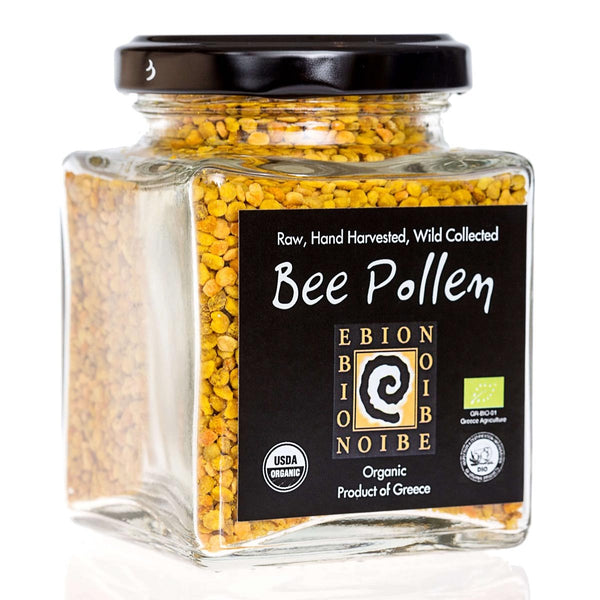You’re walking down the tea and coffee aisle in your grocery store searching for the perfect honey for your morning tea. Jar after jar say “raw” or “organic” honey. They all look the same. And if you’re like most of us, you have no idea how to spot the difference.
If you’re like me, you probably grew up pouring honey from that adorable plastic bear squeeze bottle. With an adorable bottle like that, it had to be good for us.

What is raw honey — and why does it matter?
Raw honey is honey in its most natural form. It is strained to get rid of large bits of wax or debris, but it is never heated.
Heating honey removes all natural ingredients in honey that nourish your body.
That means all of the things that make honey healing — enzymes, antioxidants, pollens — are all preserved in raw honey.
It's a product that’s alive, both in flavor and health benefits.
When you open a jar of real raw honey, you might smell wildflowers. You might even see a little pollen floating in it.
The texture is thicker, sometimes cloudier — and that’s exactly what you want from your honey.
Raw Honey vs Regular Honey
Here’s a good visual of the differences between raw honey and regular honey (or processed honey).

Is Raw Honey Better than Regular Honey?
Yes, absolutely. The primarily reason is regular honey or filtered honey is heavily processed and heated so that it can last longer on grocery shelves.
Raw honey has approximately 22 amino acids, but most impressively, it has about 30 types of bioactive plant compounds. What are those? Bioactive plant compounds are also known as polyphenols, which are antioxidants.
What is a Polyphenol?

- Free Radicals
Polyphenols neutralize free radicals, which are unstable molecules that can hurt cells and contributed to diseases like cancer. They help protect cells from oxidative stress.
- Anti-Inflammatory
Polyphenols reduce chronic inflammation, which is linked to all kinds of illnesses like heart disease, arthritis, and autoimmune disorders.
- Gut Health
Polyphenols support the growth of beneficial gut bacteria, improving digestion and overall immunity.
- Heart Health
Diets rich in polyphenols are associated with reduced risk of heart disease.
Other Polyphenol Rich Foods
If you’re curious, here’s a list of some other foods that are rich in polyphenols that you can pair with your honey superfood.

Conclusion: Why Raw Honey is Worth the Hype
When choosing between raw and regular honey, the decision goes beyond taste—it's about embracing a product rich in natural nutrients and health benefits.
Raw honey benefits for immune system are notable, as it retains enzymes, antioxidants, and polyphenols that are often lost in processed honey.
Unlike regular honey, which undergoes pasteurization and filtration, raw honey maintains its natural properties and makes it a great choice for people seeking natural remedies for seasonal allergies and other health advantages.
At BeeVitamin, we’re all about preserving foods the way nature intended them.
FAQs About Raw Honey
1.What is the difference between raw honey and regular honey?
Raw honey is unprocessed and retains all its natural enzymes and nutrients, whereas regular honey is pasteurized and filtered, which can remove beneficial compounds.
2. Can raw honey help with allergies?
Some believe that consuming local raw honey can help build immunity to local pollen, acting as a natural remedy for seasonal allergies, though scientific evidence is limited.
3. Is raw honey safe for everyone?
Raw honey is safe for most people but should not be given to infants under one year old due to the risk of botulism.
4. How should I store raw honey?
Store raw honey at room temperature in a sealed container. It may crystallize over time, but this is a natural process and doesn't indicate spoilage.
5. Does raw honey have a shelf life?
Raw honey has an indefinite shelf life if stored properly. Its natural composition makes it resistant to bacteria and spoilage.
